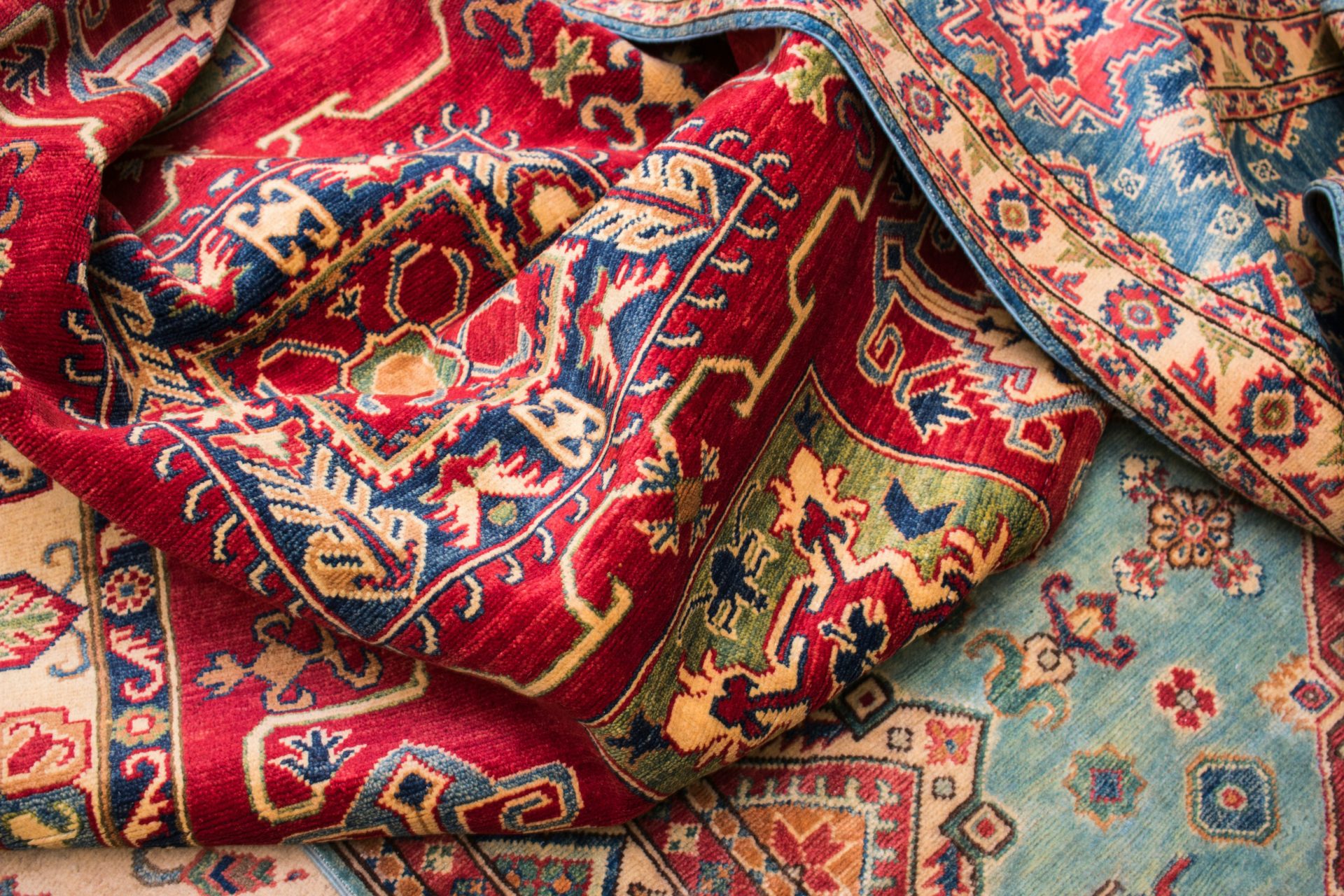
In the past, woven kilims and other handicraft carpets were a reflection of a family’s reputation. The more skilled young women were in handcrafts, the wealthier the household. Today, however, things are different.
Traditional Bosnian carpet making is on the verge of being forgotten, despite having been a refuge and form of occupational therapy for some during and after the war. Every Bosnian carpet (ćilim/kilim) tells a story, interwoven with love and respect for tradition.
The BosFam Association brings together women, most of whom are from the Podrinje region and were displaced by the war and genocide to Tuzla, where they found peace in making kilims. These women told their stories with wool thread as they waited and hoped for their loved ones to return from Srebrenica and other parts of the region.
“At that time, schools in Tuzla had been turned into refugee centers and were full of women and children. Bosnian women aren’t accustomed to sitting still. Aware that women from that part of the country are skilled in handicrafts, I thought it would be good to bring them together and divert their thoughts to some extent,” said Munira Beba Hadžić, president of the BosFam Association.
Instead of relying on traditional Bosnian carpet motifs like gugutka and kornjača, BosFam members created original designs, incorporating parts of themselves into the carpets. The first 15 kilims bear the names of their creators—Nura, Esma, Muniba, Fatima, and others.
Hadžić says that well-made carpets can last up to 300 years. Given that carpets can last for generations, the women crafted a memorial carpet in memory of all the victims of the Srebrenica genocide.
“After we’re gone, we want the carpets to continue to tell stories and preserve the memories of the genocide victims,” explained Hadžić, noting that they wove 20 names into the first carpet of loved ones who disappeared in Srebrenica.
Among their other creations, Hadžić, a teacher, highlighted a carpet bearing the names of 25 fellow educators who were killed in the genocide, as well as carpets dedicated to the killed youth, victims’ families, women, and victims from Bratunac. All of the carpets were donated to the Memorial Center in Potočari and are now part of a permanent exhibition.
Nevertheless, Hadžić worries that there may be no one to continue the story and carry on the tradition of carpet weaving, which is being suffocated by a lack of institutional support. Questioning the state’s priorities, she emphasizes that supporting carpet weaving is definitely not among them.
“It’s easier to get funding for a conference than for employing women and preserving tradition,” Hadžić remarked.

Two Months to Make One Carpet
The process of making a carpet begins with preparing the wool, which is dyed, followed by setting up the base on the loom. Threads are formed through which colored wool is threaded, using a pattern of even and odd numbers. After that, the wool is compacted, and when they want to change the color of the wool, they cut the thread and continue with another color. At the end of the weaving, the carpet is shaved.
Hadžić notes that carpet weaving requires talent, and a skilled weaver is one who can weave with both hands. “A good weaver needs about two months to make a carpet,” said Hadžić.
Fusing the Contemporary and the Traditional
The Bosnian carpet is claimed by many. The Sarajevo Film Festival has been leading the struggle to preserve this tradition and since 2019, has replaced the typical red carpet with one inspired by Sarajevo carpets dating back to 1930. In this way, they manage to achieve a blend of the traditional and contemporary, demonstrating respect and love for this heritage.
The effort to safeguard this tradition among youth is exemplified by Emir Avdić from Dubrava near Tuzla, who preserves tradition with novel methods. In the process of making carpets, he employs a modern tufting method, pressing wool onto canvas with a specific tool or tufting gun.
“I know how much kilim-making really nurtures tradition. Recognizing the importance that our grandmothers and great-grandmothers placed on the handmade production of all household items, especially kilims, I realized I can make carpets with traditional kilim motifs this way,” explained Avdić, who is among the few young people committed to this craft.
The president of BosFam believes that young people are increasingly less interested in continuing the tradition of Bosnian carpet making. “It isn’t attractive to young people, it’s not instant gratification. If we had a little more support from the authorities, perhaps there would be more interest,” said Hadžić, emphasizing the need to preserve this tradition, which she grew up with, and believes the younger generation should inherit.






